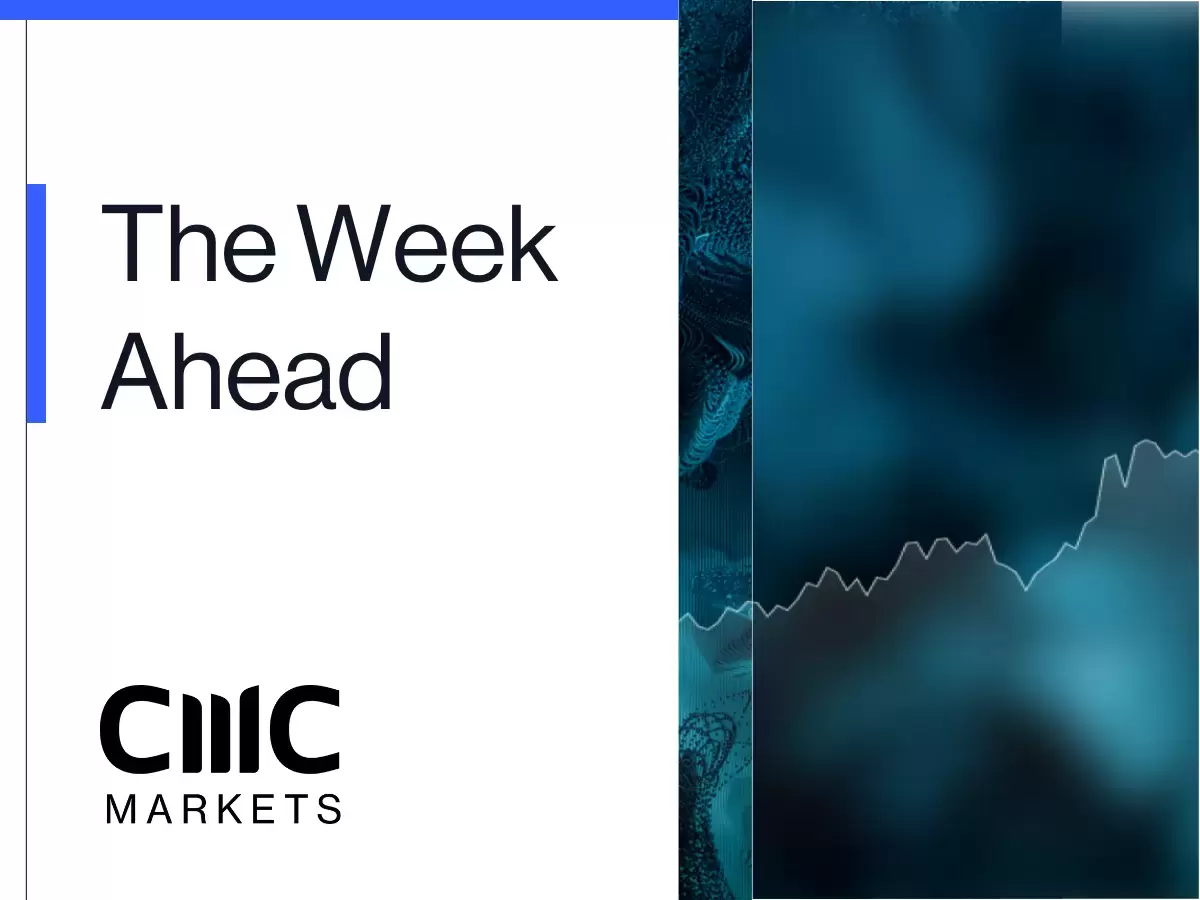Welcome to Michael Kramer’s pick of the top three market events to look out for in the week ahead.
In the US, the coming week could have significant implications for the trajectory of monetary policy, after recent inflation data caused some concern for the Federal Reserve. Economists expect first-quarter gross domestic product (GDP), out on Wednesday, to indicate that the US economy remains healthy. In contrast, Friday’s update on the personal consumption expenditures (PCE) price index, said to be the Fed’s preferred measure of inflation, is expected to show that the disinflation process, which began in 2023, has officially stalled and potentially reversed.
In addition, earnings season will intensify, with Tesla, Microsoft, and Google parent company Alphabet among the big names due to report their latest quarterly results. Meta Platforms' results may be the most consequential, however, given how much the Facebook owner’s stock has rallied of late – its shares are up more than 60% over the past six months.
Meta Platforms Q1 earnings
Wednesday 24 April: Analysts estimate that Meta’s Q1 earnings grew 96% year-on-year to $4.31 per share, while revenue is anticipated to have increased 26.2% over the same period to $36.1bn. Looking ahead, analysts expect the company to forecast Q2 revenue of $38.2bn, with full-year capex projected at $34.3bn, and total costs and expenses at $96.8bn. The market-based implied move is 8% following the announcement of the results. Meta stock has risen more than 40% year-to-date and closed at $501.80 on Thursday.
Since Meta posted blockbuster Q4 results on 1 February, triggering a post-market rally, the shares have essentially traded sideways, forming what appears to be an ascending megaphone pattern. Such patterns are considered bearish over the long term. If Meta’s upcoming results disappoint investors, a breach below support at about $490 could lead to the stock closing the gap at $395 over time. Conversely, an upside surprise could propel the shares to approximately $570, the level of the technical pattern's upper boundary.
US Q1 GDP
Thursday 25 April: In the first quarter, US GDP grew at a seasonally adjusted annualised rate of 2.1%, according to economists’ estimates, down from 3.4% in Q4. However, models such as the Atlanta Fed’s GDPNow – which provides a running estimate of GDP growth – suggest that Q1 growth may have tracked higher than expected, at around 2.9%. This creates some upside risk.
Last year, the GDPNow model predicted Q1 GDP growth of 1.1%, aligning with the advance estimate of 1.1%. In Q2, the model forecast GDP growth of 2.4%, which again matched the advance estimate. In Q3, however, the model anticipated growth of 5.4%, above the advance estimate of 4.9%. Then, in Q4, the model projected 2.4%, below an advance estimate of 3.3%. This discrepancy does create the potential for an upside surprise this time around if the median forecast does not increase before the official release.
If the actual Q1 GDP growth figure exceeds expectations, this could be bullish for the dollar as the market might further reduce the likelihood of Federal Reserve rate cuts in 2024. This could widen the divergence in the monetary policy trajectories of the world’s major central banks. The most pronounced effect could be felt by EUR/USD, which has been under pressure recently as the market anticipates the European Central Bank’s first rate cut in June. Such a scenario could see the euro weaken against the US dollar, possibly sending it below the support level at $1.061, with a break of support there potentially leading to a further decline in subsequent weeks towards $1.045. EUR/USD was trading near $1.065 on Friday morning.
US March PCE inflation
Friday 26 April: The latest reading of the personal consumption expenditures (PCE) price index, a closely watched inflation gauge among Fed officials, is anticipated to indicate that both headline and core PCE increased by 0.3% month-on-month in March, consistent with the data from February. Meanwhile, headline PCE is expected to show a year-on-year increase of 2.6%, up from 2.5% in February, while core PCE is projected to rise 2.8% year-on-year, in line with the previous month’s figure. If the month-on-month core PCE reading were to match expectations, it would likely result in the three-month annualised rate of change escalating to 4.25%, up from 3.5% in February.
This could significantly impact Treasury rates at the front end of the curve, with the US two-year Treasury note potentially spiking and moving higher, surpassing the recent consolidation near 5%. A technical breakout could even see the two-year rate climb back up to 5.25% from what appears to be a bullish pennant formation.
Key economic and company events
Here’s our rundown of notable economic announcements and company reports scheduled for the coming week:
Monday
• China: People’s Bank of China interest rate decision
• Eurozone: April consumer confidence index
• Results: Bank of Hawaii (Q1), Verizon (Q1)
Tuesday
• Eurozone: April purchasing managers’ index (PMI)
• France: April PMI
• Germany: April PMI
• New Zealand: March imports, exports and trade balance
• UK: April PMI
• US: April PMI
• Results: Associated British Foods (HY), PepsiCo (Q1), Spotify (Q1), Tesla (Q1), Visa (Q2)
Wednesday
• Australia: Q1 consumer price index (CPI)
• Canada: February retail sales
• Germany: April IFO business climate index
• Results: Boeing (Q1), HSBC (Q1), IBM (Q1), Meta Platforms (Q1), PensionBee (Q1)
Thursday
• Japan: April Tokyo CPI
• US: Q1 gross domestic product (GDP)
• Results: Alphabet (Q1), AstraZeneca (Q1), Barclays (Q1), Caterpillar (Q1), Intel (Q1), J Sainsbury (FY), Microsoft (Q3), WH Smith (HY)
Friday
• Japan: Bank of Japan interest rate decision
• US: March personal consumption expenditures (PCE) price index; April Michigan consumer sentiment index
• Results: AbbVie (Q1), Aon (Q1), Chevron (Q1), Colgate-Palmolive (Q1), Exxon Mobil (Q1), Jupiter Fund Management (HY)
Note: While we check all dates carefully to ensure that they are correct at the time of writing, the above announcements are subject to change.
